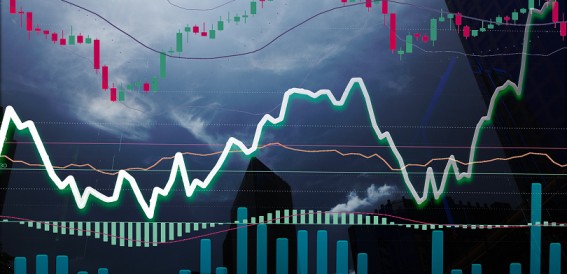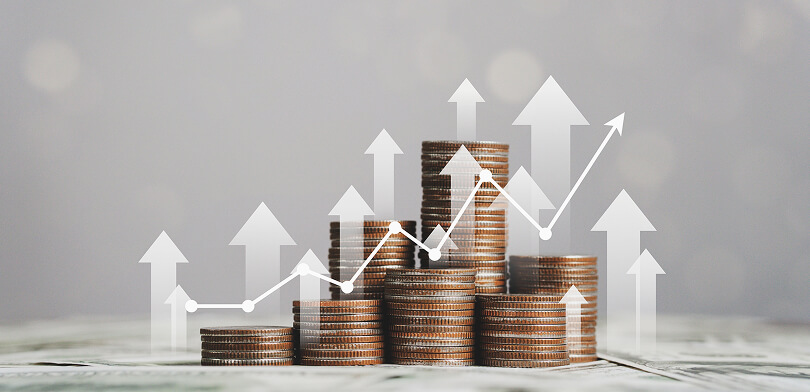- Last Updated: Apr 17,2024 |
- Religare Broking
Treasury bond yield rates captivate the attention of seasoned investors and newcomers alike and for a good reason. Understanding the concept of Treasury Yield is essential for anyone looking to make informed decisions in the financial markets. It refers to the return on investment that an individual can expect from investing in Treasury yield bonds issued by the government.
These bonds are among the safest investments available, serving as a benchmark for other fixed-income securities. In this post, we will explore all about it and study various investment strategies that can help maximize returns for those interested in bond investing.
- What is Treasury Yield?
- Treasury Bond Yield Rates
- Investing in Treasury Yield
- Factors Influencing Treasury Yield
- Conclusion
Topics Covered:
What is Treasury Yield?
Treasury Yield is a measure that indicates the return an investor can expect to receive from investing in various government securities, such as Treasury bonds, notes, and bills.
It represents the interest rate that the government pays to borrow money from investors. Treasury bonds typically have longer maturities, ranging from 10 to 30 years, and offer higher yields than shorter-term Treasury notes and bills.
Government securities that offer Treasury Yields are considered low-risk investments, as they are backed by the full faith and credit of the U.S. government. This makes them attractive to investors seeking a stable and predictable source of income. Treasury bonds, notes, and bills are actively traded in the financial markets, and their yields serve as a benchmark for other economic interest rates.
Its role in the financial markets is significant. They influence various interest rates, including mortgage rates, corporate bond yields, and even the cost of borrowing for businesses and consumers. Changes in Treasury Yields can reflect market expectations regarding economic growth, inflation, and monetary policy decisions.
For investors, it provides valuable information for assessing the relative attractiveness of different investment options. Higher yields generally indicate higher returns but may also suggest higher risks.
Investors can analyze its curves to understand the relationship between yields and maturities, which can inform their investment decisions and portfolio diversification strategies.
Also Read: Definition of Demat AccountTreasury Bond Yield Rates
Treasury bond yield rates refer to the interest rates investors receive from investing in Treasury bonds. These rates are determined by various factors, including the current economic conditions, inflation expectations, and the supply and demand dynamics in the bond market.
In recent years, Treasury bond yield rates have experienced notable trends and changes. One significant trend has been the overall decline in yields, driven by low inflation and accommodative monetary policies. This trend has been further accentuated by the economic impact of the COVID-19 pandemic, leading to increased demand for Treasury bonds as a safe haven investment.
Another noteworthy pattern in Treasury bond yields is their inverse relationship with market conditions. When the economy is performing well, with strong growth and low unemployment, investors may shift their focus towards riskier assets, leading to lower demand for Treasury bonds and higher yields.
Conversely, during periods of economic uncertainty or market volatility, investors tend to seek the safety of Treasury bonds, driving up demand and pushing yields lower.
Investing in Treasury Yield
In India, investing in Treasury Yields, also known as government securities or G-Secs, can be done through various channels. The primary platform for retail investors is the government securities market facilitated by the Reserve Bank of India (RBI). Here are the common avenues:
Retail Direct (RD) Scheme: The RBI's Retail Direct platform allows retail investors to buy and sell government securities directly. Investors can register on the RD platform, bid for government securities in primary auctions, and also trade in the secondary market.
Banks and Financial Institutions: Retail investors can approach banks and financial institutions that offer government securities as part of their investment products. Banks often act as intermediaries, allowing individuals to invest in government bonds.
Stock Exchanges: Some stock exchanges in India facilitate trading in government securities. The National Stock Exchange (NSE) and Bombay Stock Exchange (BSE) provide platforms for investors to buy and sell government bonds.
Mutual Funds: Investors can consider debt mutual funds that allocate a portion of their portfolio to government securities. This provides a diversified approach to government bond investments, managed by professional fund managers.
Before investing, individuals should assess their risk tolerance, investment horizon, and financial goals. Additionally, staying informed about prevailing interest rates, economic conditions, and the yield curve is crucial for making informed investment decisions in the Treasury Yield market.
For considering adding bonds to your portfolio, consider open a free demat account. This will allow you to conveniently buy and hold bonds directly, potentially boosting your overall investment returns.
Factors Influencing Treasury Yield
Treasury bond yield rates, which represent the return earned by investors, are influenced by various economic indicators, Federal Reserve policies, and global market conditions.
Economic indicators, such as GDP growth, inflation rates, and employment figures, significantly shape Treasury yields. A strong economy with robust growth and low inflation typically yields higher yields as investors demand higher returns to offset potential inflationary risks.
Federal Reserve policies, specifically monetary policy decisions, directly impact Treasury yields. The Federal Reserve can adjust short-term interest rates, influencing the bond market. Treasury yields tend to respond when the Fed raises rates to curb inflation or stimulate economic growth.
Recommended Read: Key Factors that Affect Stock Market
Global market conditions also affect Treasury yields. Factors like geopolitical events, trade tensions, and shifts in investor sentiment can impact demand for Treasury securities. In times of global uncertainty, investors often seek the safety and stability of Treasury bonds, leading to lower yields.
Conclusion
Investors can make strategic decisions about their investment portfolio by keeping an eye on treasury yields and understanding their impact on the economy. Whether you are a seasoned investor or just starting out, staying informed about treasury yields and their role in the financial market is important. With this knowledge, you can confidently make investment decisions that align with your financial goals.













